|
Day 3 - Aswan, the Unfinished Obelisk and Philae Temple on Agilkia Island.
The city of Aswan is close by to the famous Aswan dam, and is also the site of the ancient granite quarries used for construction of parts of the temples, tombs, and pyramids.
|
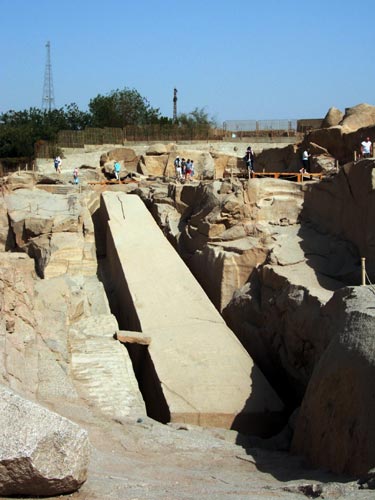
In the granite quarry is the 'Unfinished Obelisk', left because it developed cracks before it could be finally removed. It enabled historians to gain an insight into the methods used by the Egyptian sculptors and masons to cut and move these massive columns from the site. It would have been the largest obelisk.
|
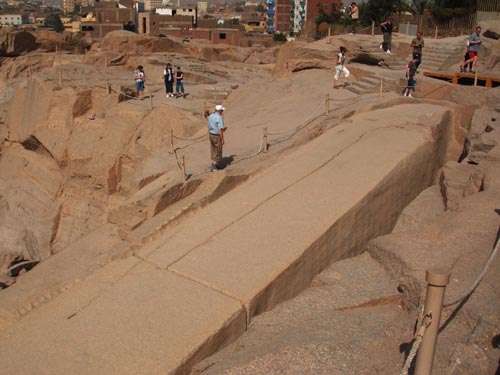
The cracks are visible in this shot. The ancient egyptians had no steel chisels - they used 'dolorite', a harder stone to slowly chip away at the granite. They also used hot bricks to 'flake' away lumps, or cut slots in which they jammed sycamore wood and they then soaked with water so it swelled and 'split' the stone.
The main building blocks of the temples and pyramids were made from softer sandstone, and quarries for this were visible along the banks as we sailed along the Nile.
|
|
We then took a small boat across to Philae temple on Agilkia Island.
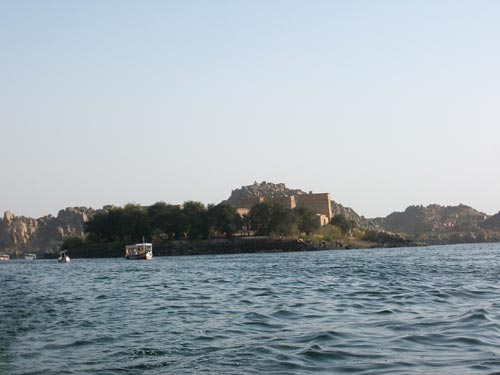
|
The temple was originally on another island, but when the Aswan dam was built it had to be moved block by block to Agilkia Island to raise it above the water level.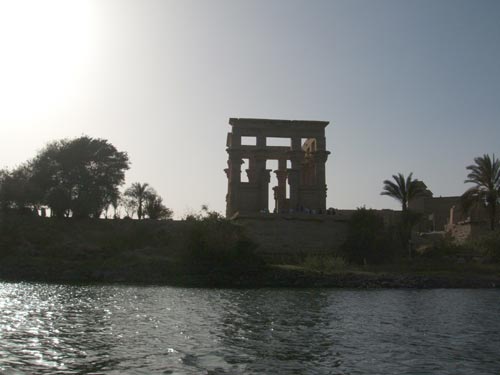
|
|
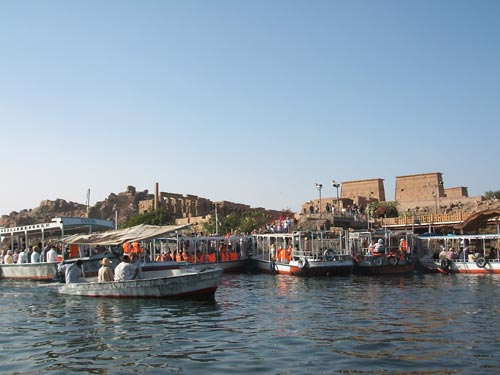
|
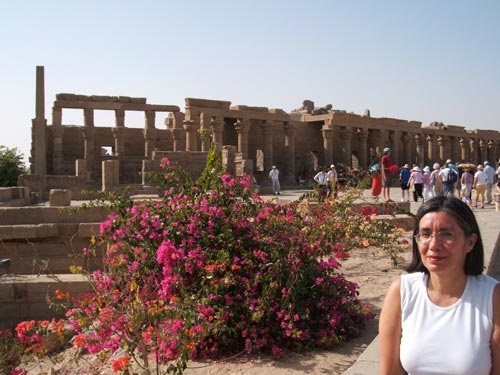
|
|
Normally temples were built in a straight line from front to back, but Philae was originally built with a curve to follow the contours of it's original location. This curve was reproduced when it was relocated.
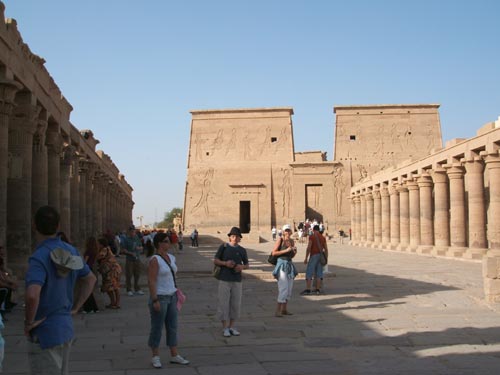
|
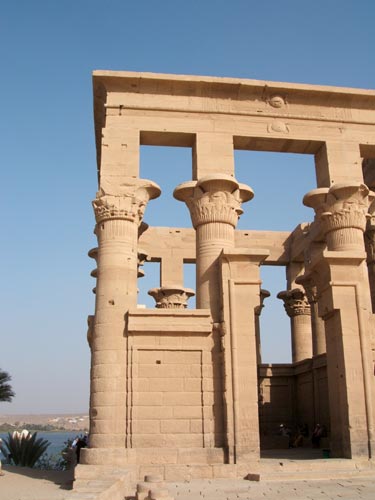
|
|